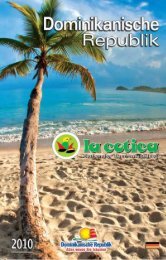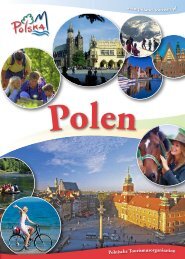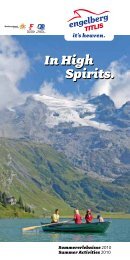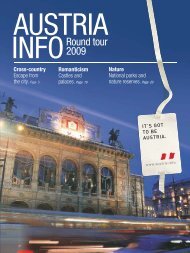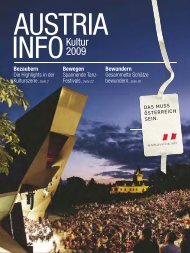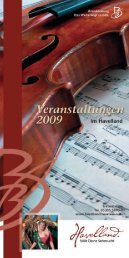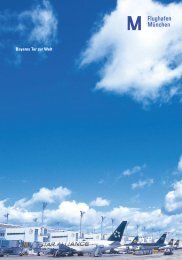i Dominican Republic - travelfilm.de
i Dominican Republic - travelfilm.de
i Dominican Republic - travelfilm.de
Create successful ePaper yourself
Turn your PDF publications into a flip-book with our unique Google optimized e-Paper software.
General information<br />
In the heart of the Caribbean, washed<br />
by the waters of the Atlantic Ocean to<br />
the north and the impetuous Caribbean<br />
Sea in the south, nestles a placid and<br />
beautiful country officially called The<br />
<strong>Dominican</strong> <strong>Republic</strong>.<br />
It is located between latitu<strong>de</strong> 17 o 40’<br />
and 19 o 56’ North and longitu<strong>de</strong> 68 o<br />
20’ and 72 01’ west of the Greenwich<br />
meridian (GMT -4).<br />
Christopher Columbus discovered the<br />
island on December 5, 1492, during<br />
his first voyage to the New World. It<br />
occupies 18,704 sq. mi/48,442 sq. km<br />
of the 76,192 sq. km it shares with the<br />
neighboring <strong>Republic</strong> of Haiti. Its natural<br />
beauty and rich history fascinate as well<br />
excite those who get to know it.<br />
By a 1508 royal edict, King Ferdinand<br />
of Spain named it the Island of<br />
Santo Domingo. Its aboriginal name,<br />
Quisqueya, means “mother of all lands”<br />
in the Taino language. At the time of its<br />
“Discovery” by Christopher Columbus,<br />
our island was populated by aborigines<br />
that called themselves “Tainos”, a word<br />
which translates as “the good”.<br />
The Taino were a part of the Arawak<br />
peoples of the tropical regions of the<br />
South American continent, from where<br />
it is believed they migrated by canoe<br />
through the Lesser Antilles to the Greater<br />
Antilles. They were physically well-built;<br />
they had a rather tawny complexion<br />
8<br />
and dark eyes. Even though they were<br />
generally peaceful and were practically<br />
subjugated by an internal regime un<strong>de</strong>r<br />
the dominion of a “cacique” or chieftain,<br />
historical records do show instances<br />
in which they bravely <strong>de</strong>fen<strong>de</strong>d their<br />
families, their land and their freedom<br />
from the Conquistadors that enslave them.<br />
Unfortunately, a population estimated<br />
at around 600,000 was practically<br />
exterminated in less than thirteen years.<br />
Taíno sociopolitical structure was<br />
organized un<strong>de</strong>r five polities or<br />
cacicazgos: Marién, governed by<br />
Guacanagarix; Maguá was dominated<br />
by the cacique Guarionex; Caonabo<br />
ruled in Maguána; in Higüey, Cayacoa;<br />
and Jaragua fell un<strong>de</strong>r the might of<br />
Bohechío. After Bohechio’s <strong>de</strong>ath,<br />
his sister Anacaona, who was also<br />
the widow of Caonabo, emerged as<br />
his successor. She was reputedly the<br />
cleverest, most beautiful and talented<br />
woman in the island. Nevertheless, she<br />
had to witness the merciless slaughter<br />
of her people at the sword of Nicolas<br />
<strong>de</strong> Ovando, the Spanish governor, in<br />
Cradle of the Caribbean.



